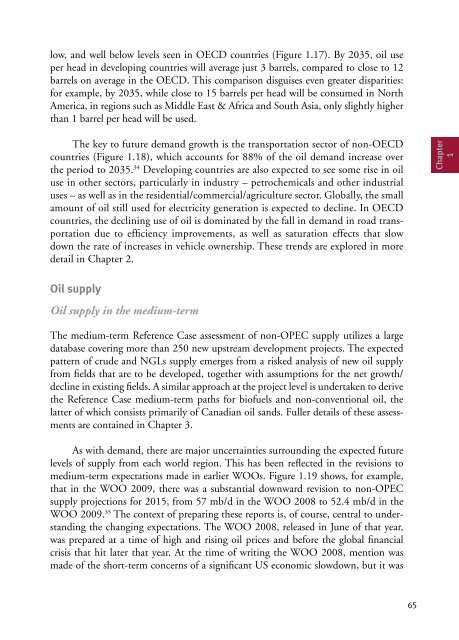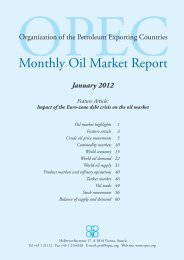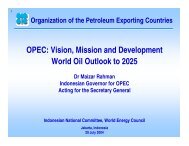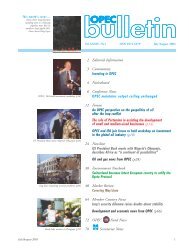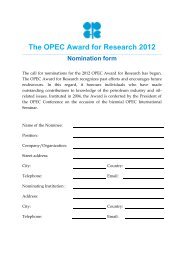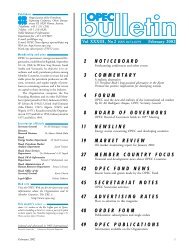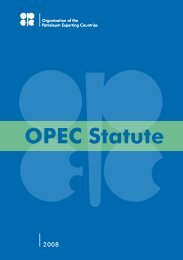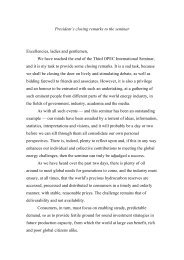Section One
Section One
Section One
Create successful ePaper yourself
Turn your PDF publications into a flip-book with our unique Google optimized e-Paper software.
low, and well below levels seen in OECD countries (Figure 1.17). By 2035, oil use<br />
per head in developing countries will average just 3 barrels, compared to close to 12<br />
barrels on average in the OECD. This comparison disguises even greater disparities:<br />
for example, by 2035, while close to 15 barrels per head will be consumed in North<br />
America, in regions such as Middle East & Africa and South Asia, only slightly higher<br />
than 1 barrel per head will be used.<br />
The key to future demand growth is the transportation sector of non-OECD<br />
countries (Figure 1.18), which accounts for 88% of the oil demand increase over<br />
the period to 2035. 34 Developing countries are also expected to see some rise in oil<br />
use in other sectors, particularly in industry – petrochemicals and other industrial<br />
uses – as well as in the residential/commercial/agriculture sector. Globally, the small<br />
amount of oil still used for electricity generation is expected to decline. In OECD<br />
countries, the declining use of oil is dominated by the fall in demand in road transportation<br />
due to efficiency improvements, as well as saturation effects that slow<br />
down the rate of increases in vehicle ownership. These trends are explored in more<br />
detail in Chapter 2.<br />
Oil supply<br />
Oil supply in the medium-term<br />
The medium-term Reference Case assessment of non-OPEC supply utilizes a large<br />
database covering more than 250 new upstream development projects. The expected<br />
pattern of crude and NGLs supply emerges from a risked analysis of new oil supply<br />
from fields that are to be developed, together with assumptions for the net growth/<br />
decline in existing fields. A similar approach at the project level is undertaken to derive<br />
the Reference Case medium-term paths for biofuels and non-conventional oil, the<br />
latter of which consists primarily of Canadian oil sands. Fuller details of these assessments<br />
are contained in Chapter 3.<br />
As with demand, there are major uncertainties surrounding the expected future<br />
levels of supply from each world region. This has been reflected in the revisions to<br />
medium-term expectations made in earlier WOOs. Figure 1.19 shows, for example,<br />
that in the WOO 2009, there was a substantial downward revision to non-OPEC<br />
supply projections for 2015, from 57 mb/d in the WOO 2008 to 52.4 mb/d in the<br />
WOO 2009. 35 The context of preparing these reports is, of course, central to understanding<br />
the changing expectations. The WOO 2008, released in June of that year,<br />
was prepared at a time of high and rising oil prices and before the global financial<br />
crisis that hit later that year. At the time of writing the WOO 2008, mention was<br />
made of the short-term concerns of a significant US economic slowdown, but it was<br />
65<br />
Chapter<br />
1


